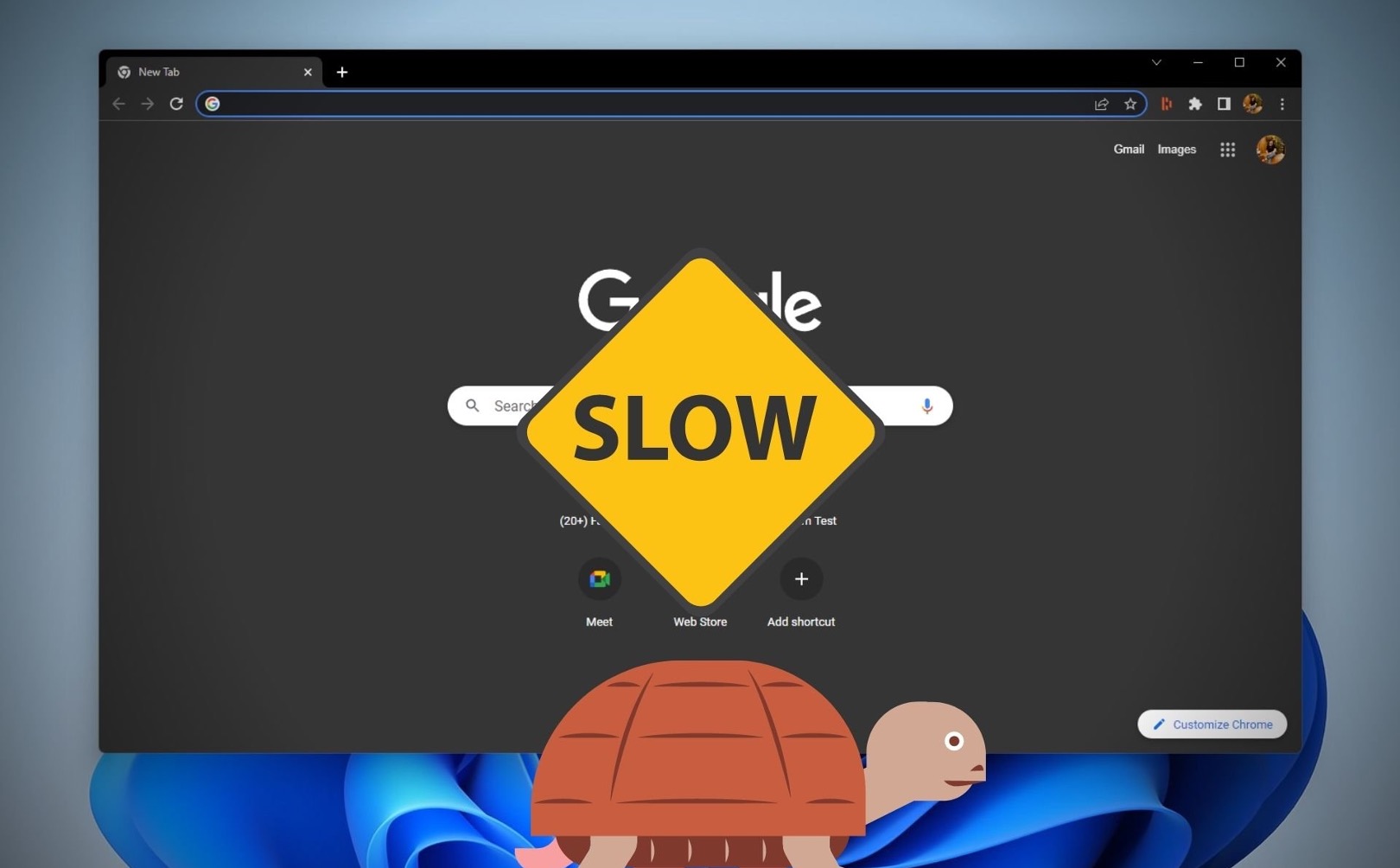Outdated Chrome Version
Is your Chrome browser running slower than usual? One of the common culprits behind this issue could be an outdated version of the Chrome browser. Keeping your Chrome browser updated is crucial for ensuring optimal performance and security. Here's why an outdated Chrome version might be causing your browsing experience to lag:
-
Security Vulnerabilities: Outdated versions of Chrome may contain security vulnerabilities that can be exploited by malicious entities. These vulnerabilities can compromise the safety of your browsing activities and put your personal information at risk. By updating to the latest version of Chrome, you can benefit from the latest security patches and enhancements, safeguarding your online privacy and data.
-
Performance Enhancements: Each new Chrome update typically includes performance enhancements and bug fixes that contribute to a smoother and faster browsing experience. By running an outdated version, you may be missing out on these improvements, leading to sluggish performance and slower loading times for web pages.
-
Compatibility Issues: As web technologies evolve, outdated versions of Chrome may encounter compatibility issues with modern websites and web applications. This can result in rendering errors, functionality issues, and overall degradation of the browsing experience. Updating to the latest Chrome version ensures better compatibility with the latest web standards and technologies, allowing you to access and interact with online content seamlessly.
To address the issue of an outdated Chrome version, it's essential to regularly check for updates and ensure that your browser is running the latest available version. Chrome typically updates automatically in the background, but you can manually trigger an update check by following these steps:
- Click on the three-dot menu icon in the top-right corner of the Chrome window.
- Navigate to "Help" and select "About Google Chrome."
- Chrome will then check for updates and prompt you to install the latest version if one is available.
By staying proactive about keeping your Chrome browser up to date, you can mitigate the risks associated with security vulnerabilities, benefit from performance improvements, and maintain compatibility with the ever-evolving landscape of the web.
Too Many Open Tabs
Do you find yourself juggling an excessive number of tabs in your Chrome browser? While it's tempting to keep multiple tabs open for quick access to various websites and resources, this habit can significantly impact your browsing speed and overall system performance. Here's why having too many open tabs can lead to a sluggish browsing experience:
-
Memory Consumption: Each open tab consumes system memory, and when numerous tabs are active simultaneously, it can strain your computer's resources. This can result in slower response times, delayed tab switching, and an overall decrease in browsing efficiency. Modern websites with multimedia content and dynamic elements can further exacerbate memory consumption, especially when multiple tabs are loaded with such content.
-
CPU Utilization: In addition to memory consumption, having an excessive number of tabs open can lead to high CPU utilization. This can cause your computer's processor to work harder, leading to increased heat generation and potential performance throttling. As a result, tasks such as page loading, tab switching, and overall browser responsiveness may be noticeably slower.
-
Impact on System Resources: Beyond the direct impact on memory and CPU utilization, having too many open tabs can strain other system resources, such as disk I/O and network bandwidth. This can lead to slower data retrieval from the disk and network, affecting the loading times of web pages and the responsiveness of web-based applications.
To address the issue of having too many open tabs, consider the following strategies:
-
Tab Management: Regularly review your open tabs and close those that are no longer needed. Utilize bookmarking and tab grouping features to organize and categorize your tabs, allowing you to access them efficiently without keeping them all open simultaneously.
-
Tab Suspender Extensions: Explore the use of tab suspender extensions, which can automatically unload inactive tabs from memory, reducing memory and CPU usage. These extensions can help optimize system resources while retaining quick access to your tabs when needed.
-
Session Management: Leverage Chrome's built-in session management features or use extensions that enable you to save and restore sets of tabs. This allows you to declutter your current browsing session without losing access to important tabs for future reference.
By adopting these practices, you can alleviate the strain on your system resources, improve browsing performance, and maintain a more organized and efficient tab management approach. It's important to strike a balance between accessibility and resource optimization, ensuring that your browsing experience remains smooth and responsive even with multiple tabs in use.
Extensions and Plugins
Extensions and plugins are valuable additions to the Chrome browser, offering enhanced functionality and customization options. However, an excessive number of extensions and plugins can contribute to a slowdown in browsing performance. Here's a detailed exploration of how extensions and plugins can impact Chrome's speed and what steps can be taken to address this issue.
Impact on Browsing Performance
-
Resource Consumption: Each installed extension or plugin consumes system resources, including memory and CPU utilization. When multiple extensions are active simultaneously, they can collectively strain the browser and the underlying system, leading to slower page loading, tab switching, and overall responsiveness.
-
Background Processes: Some extensions and plugins run background processes to support their functionality, even when not directly in use. These processes can consume system resources and impact browsing performance, especially on systems with limited memory and processing power.
-
Compatibility Issues: Certain extensions and plugins may conflict with each other or with the browser itself, leading to stability issues and performance degradation. This can manifest as frequent crashes, unresponsiveness, or erratic behavior within the browser environment.
Mitigating the Impact
-
Regular Review and Cleanup: Periodically review the list of installed extensions and plugins to identify those that are no longer essential or actively used. Uninstalling or disabling unnecessary extensions can free up system resources and streamline the browsing experience.
-
Selective Activation: Consider enabling extensions and plugins on a per-need basis. Utilize Chrome's built-in feature to disable extensions and selectively activate them when their specific functionality is required. This approach can help minimize the simultaneous impact of multiple extensions on browsing performance.
-
Extension Profiling: Evaluate the resource consumption and performance impact of individual extensions using Chrome's built-in task manager. This tool provides insights into the resource usage of each extension, allowing you to make informed decisions about their necessity and impact on browsing speed.
-
Alternative Solutions: Explore alternative solutions that offer similar functionality to certain extensions or plugins. For example, built-in browser features or single, multifunctional extensions can replace multiple specialized extensions, reducing the overall resource footprint.
By implementing these strategies, users can optimize their Chrome browsing experience by managing extensions and plugins effectively. This proactive approach not only addresses potential performance issues but also enhances the overall stability and responsiveness of the browser, ensuring a smoother and more efficient browsing experience.
Hardware and System Resources
The performance of your Chrome browser is intricately linked to the hardware and system resources of your computer. Insufficient hardware capabilities or resource constraints can significantly impact the browsing experience, leading to slow loading times, unresponsive tabs, and overall sluggishness. Here's a comprehensive exploration of how hardware and system resources influence Chrome's speed and what steps can be taken to address potential limitations.
Impact of Hardware and System Resources
-
Memory (RAM) Constraints: Chrome is known for its memory-intensive nature, especially when handling multiple tabs and complex web applications. Insufficient RAM can lead to frequent tab crashes, slow tab switching, and overall system slowdowns as the browser struggles to manage its memory footprint effectively.
-
Processor (CPU) Utilization: The processing power of your computer's CPU plays a crucial role in handling the computational tasks associated with browsing. A slow or overloaded CPU can result in delayed page rendering, unresponsive script execution, and decreased overall browsing responsiveness.
-
Storage Speed: The speed and efficiency of your computer's storage, whether it's a traditional hard drive or a solid-state drive (SSD), can impact the loading times of web pages, the caching of browser data, and the responsiveness of web-based applications. Slow storage devices can introduce bottlenecks that affect the overall browsing experience.
-
Network Bandwidth: The speed and stability of your internet connection directly influence the loading times of web pages, the streaming of multimedia content, and the responsiveness of web applications. Limited bandwidth or network congestion can lead to slow data retrieval, buffering issues, and overall sluggishness in online activities.
Mitigating Resource Limitations
-
Upgrade Hardware: If your computer's hardware is outdated or insufficient for modern browsing demands, consider upgrading critical components such as RAM, CPU, or storage. Increasing the available resources can significantly improve Chrome's performance and responsiveness.
-
Optimize Chrome Settings: Chrome offers various settings and flags that allow users to optimize resource usage. For example, adjusting the number of processes used by Chrome, enabling hardware acceleration, and managing memory-intensive features can help alleviate resource constraints.
-
Close Resource-Intensive Applications: Running resource-intensive applications alongside Chrome can strain system resources, leading to performance degradation. Closing unnecessary applications and processes can free up resources for the browser, enhancing its speed and responsiveness.
-
Network Optimization: Ensure that your network infrastructure, including routers and modems, is optimized for maximum speed and stability. Additionally, consider using ad blockers and data-saving extensions to reduce unnecessary network traffic and improve browsing performance.
By addressing hardware and system resource limitations, users can optimize their browsing experience and ensure that Chrome operates at its full potential. Understanding the impact of these factors and taking proactive measures to mitigate their constraints can lead to a smoother, faster, and more responsive browsing experience.
Cache and Cookies
Cache and cookies play a significant role in shaping the browsing experience within the Chrome browser. However, an accumulation of outdated cache data and an excessive number of cookies can contribute to a slowdown in browsing speed and performance. Let's delve into the impact of cache and cookies on Chrome's speed and explore effective strategies to address potential issues.
Impact on Browsing Performance
Cache:
- Outdated Data: The browser cache stores temporary copies of web pages, images, and other resources to expedite subsequent access to the same content. However, over time, the cache can become cluttered with outdated or redundant data, leading to slower page loading times and potential rendering issues.
- Storage Overhead: An excessively large cache can consume significant disk space, especially on systems with limited storage capacity. This can impact the overall system performance and the efficiency of data retrieval, affecting the responsiveness of the browser.
Cookies:
- Tracking and Profiling: While cookies serve various useful purposes, such as maintaining user sessions and preferences, an abundance of cookies from different websites can lead to tracking and profiling activities. This can impact privacy and potentially slow down the browser as it processes a large number of cookies during each browsing session.
- Data Exchange Overhead: The exchange of cookie data between the browser and web servers can introduce additional overhead, especially when numerous cookies are involved. This can impact the speed of web page loading and the overall responsiveness of web-based applications.
Mitigating Cache and Cookies Issues
Cache:
- Regular Cache Clearing: Periodically clearing the browser cache can help remove outdated and redundant data, allowing the browser to fetch fresh content from websites and improve overall page loading times.
- Automated Cache Management: Consider using browser extensions or built-in features that automate cache management, ensuring that the cache remains optimized without manual intervention.
Cookies:
- Selective Cookie Management: Review and selectively delete cookies from specific websites that are no longer relevant. Most browsers offer granular control over cookie management, allowing users to retain essential cookies while removing others.
- Cookie Blocking: Utilize browser settings or extensions to block or limit the acceptance of third-party cookies, reducing the overall volume of cookies stored and exchanged during browsing sessions.
By implementing these strategies, users can effectively manage the impact of cache and cookies on Chrome's speed, ensuring a more streamlined and responsive browsing experience. Proactive management of cache and cookies not only contributes to improved performance but also enhances privacy and data security within the browser environment.
Malware and Viruses
The presence of malware and viruses can significantly impede the performance and security of the Chrome browser, leading to a range of detrimental effects on the overall browsing experience. Malicious software, including viruses, worms, Trojans, and other forms of malware, can infiltrate the browser environment, compromise system integrity, and disrupt normal browsing activities. Understanding the impact of malware and viruses on Chrome's speed and taking proactive measures to mitigate these threats are essential for maintaining a secure and efficient browsing experience.
Impact on Browsing Performance
Malware and viruses can exert a profound impact on the speed and responsiveness of the Chrome browser through various mechanisms:
-
Resource Consumption: Certain types of malware are designed to consume system resources, including memory and CPU cycles, in the background. This can lead to a noticeable slowdown in browsing performance, causing delays in page loading, unresponsive tabs, and overall sluggishness.
-
Network Interference: Some forms of malware engage in unauthorized network activities, such as generating excessive network traffic, redirecting web requests, or injecting unwanted content into web pages. These activities can disrupt the normal flow of data, leading to slower loading times and potential connectivity issues.
-
Browser Hijacking: Malware and viruses may attempt to hijack the browser, altering its settings, injecting unwanted toolbars or extensions, and redirecting web searches. These unauthorized modifications can significantly impact the browsing experience, resulting in erratic behavior and decreased speed.
Mitigating Malware and Virus Threats
To address the threat of malware and viruses impacting Chrome's speed and performance, users can adopt the following proactive measures:
-
Comprehensive Security Software: Install reputable antivirus and anti-malware software to regularly scan and protect the system, including the Chrome browser, from potential threats. Ensure that the security software is kept up to date to effectively detect and neutralize emerging threats.
-
Safe Browsing Practices: Exercise caution when downloading files, clicking on links, or installing browser extensions. Avoid visiting untrustworthy websites and be wary of unsolicited pop-ups or download prompts, as they may be indicative of potential malware distribution channels.
-
Browser Security Features: Leverage built-in security features of Chrome, such as Safe Browsing, which provides warnings about potentially harmful websites and downloads. Keep Chrome's security settings enabled to benefit from its protective capabilities.
-
Regular System Scans: Schedule periodic full system scans using security software to detect and remove any existing malware or viruses that may be impacting the Chrome browser's performance.
By implementing these proactive measures, users can effectively mitigate the impact of malware and viruses on Chrome's speed and performance, ensuring a secure and seamless browsing experience. Maintaining a vigilant stance against potential threats is crucial for safeguarding both the browser and the overall system from the detrimental effects of malicious software.

























